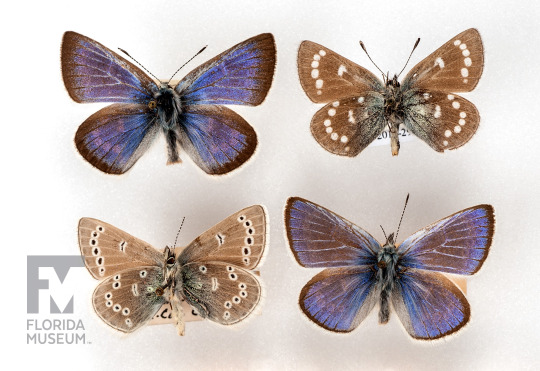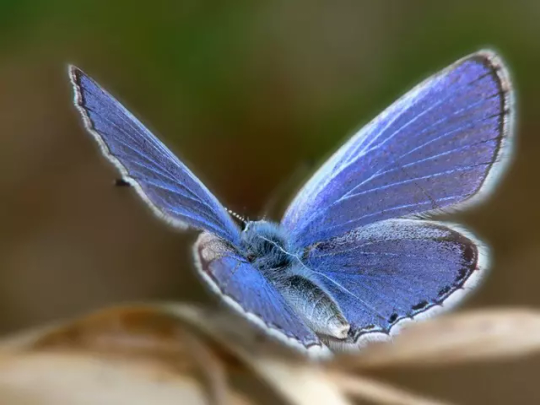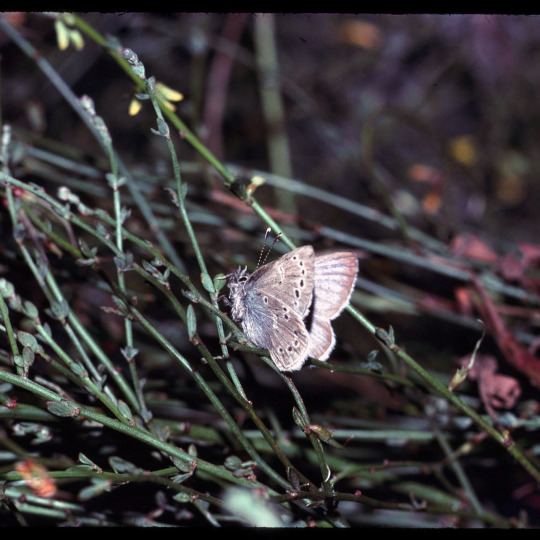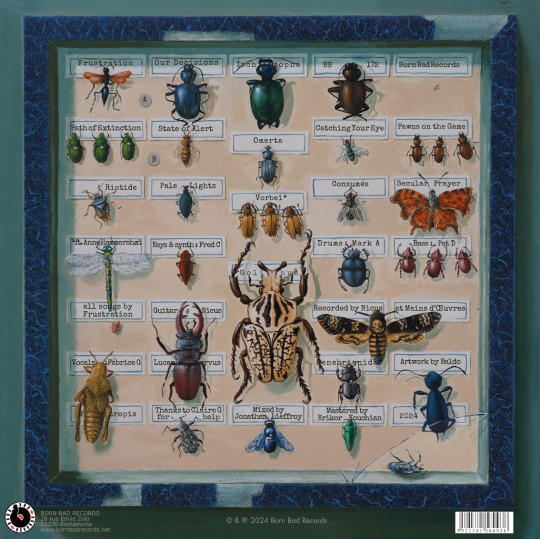#extinct insect
Explore tagged Tumblr posts
Text
The love for nature leaving my body after spotting one (1) mosquito

6K notes
·
View notes
Text

Xerces Society: Announcing The State Of The Bees Initiative: Our Plan To Study Every Wild Bee Species In The U.S.
This is really exciting news! For those unaware, the Xerces Society has been focusing on invertebrate conservation for over fifty years, and has pioneered a lot of the work to bring awareness to the devastating losses of not only insects but other terrestrial and aquatic invertebrates. It gets its name from the Xerces blue butterfly (Glaucopsyche xerces), the first North American butterfly driven to extinction by human activities.
Even if you haven't heard of the Xerces Society, you've probably come across various "Save the Bees!" campaigns. These frequently focus on the domesticated European honey bee (Apis mellifera), which, while it may be important to crop pollination in many parts of the world, is not a part of natural ecosystems in places like the Americas and Australia, and can be considered an invasive species at times. With the rise of colony collapse disorder (CCD) particularly after the turn of the 21st century, where entire domestic honeybee colonies would die off, the need to preserve bees began to gain wider public acknowledgement.
But what many people don't realize is that it is the thousands upon thousands of other native bee species worldwide that are in greater danger of extinction. They don't have armies of beekeepers giving them safe places to live and treating them for diseases and parasites. More importantly, where honey bees may visit a wide variety of plants, native bees often have a much narrower series of species they visit, and they are quite vulnerable to habitat loss. Most bees are not as social as honey bees and live solitary lives, unseen by the casual observer.
Invertebrates in general often suffer from a lack of conservation information, meaning that particularly vulnerable species may fly under the radar and risk going extinct without anyone realizing until it's too late. This ambitious program by the Xerces Society aims to solve that problem, at least for the 3,600+ species of bee in the United States. If they can assign a conservation status to each one, then that strengthens the argument toward protecting their wild habitats and working to increase their numbers. Hopefully it will also prompt more attention to other under-studied species that are in danger of going extinct simply because we don't know enough about them.
#bees#save the bees#invertebrates#arthropods#insects#entomology#nature#wildlife#animals#ecology#environment#conservation#science#scicomm#endangered species#extinction#pollinators#Xerces Society#Xerces blue
598 notes
·
View notes
Text

Scientists' warning to humanity on insect extinctions
by University of Huddersfield
Some of the tiniest creatures on the planet are vital for the environment. But there is a worldwide fall in insect numbers after an accelerating rate of extinction. Now, a global group of 30 scientists—including University of Huddersfield lecturer Dr. Matt Hill—has highlighted the issue and suggests practical steps that everyone can take to help halt the decline. These include mowing lawns less often, avoiding pesticides and leaving old trees, stumps and dead leaves alone...
Read more: https://phys.org/news/2020-04-scientists-humanity-insect-extinctions.html
494 notes
·
View notes
Text

writing eulogies for species we haven't yet lost mourning a world full of tiny lives i could never save
134 notes
·
View notes
Text

X is for Xerces Blue Butterfly
Xerces blue butterflies can only be seen in museums. They went extinct when buildings replaced San Francisco's coastal sand dunes.
118 notes
·
View notes
Text
Endangered Fireflies & Conservation
Fireflies are at risk of extinction due to habitat destruction, light pollution, and pesticide use. Recovery efforts started in 2023 for the 18 endangered species in North America. Almost 1 in 3 firefly species in the US and Canada are threatened with extinction.
Scientists have yet to prove the effectiveness of these steps due to limited research on firefly populations. However, there is evidence suggesting that human activities may contribute to the decline of fireflies. So, here's what you can do:
Turn off outside lights during nighttime hours
Allow logs and leaves to naturally decompose in your yard
Incorporate areas of water into your landscaping
Refrain from using pesticides in your yard
Avoid excessive mowing of your lawn
Plant native tree species in your yard.
Please take a moment to explore resources related to firefly conservation:
Discover articles from the Xerces Society on firefly conservation: https://www.xerces.org/endangered-species/fireflies
Watch a video from the Canadian Permaculture Legacy on saving fireflies: https://www.youtube.com/watch?v=McjHyQMf5eQ
Learn more about the Firefly Conservation & Research organization: http://www.firefly.org/
Explore their articles on how you can contribute to firefly conservation: https://www.firefly.org/how-you-can-help.html
If you have spotted fireflies in your area, please report your sightings here: https://www.firefly.org/firefly-sightings.html
#fireflies#firefly#lightning bug#bugs#insects#conservation#endangered species#north america#Xerces Society#Fire fly#extinction#environment#cottagecore#gardening#permaculture#agriculture#light pollution#Canada#United States#habitat destruction#habitat loss#restoration#glow worm
214 notes
·
View notes
Text

alt mode
521 notes
·
View notes
Text
I decided to look up some good news stories and here's one I'm really excited about:
essentially, the Chequered Skipper (Carterocephalus palaemon) has been extinct in England since the 1970s, but populations still exist elsewhere in Europe, so after a lot of conservation work to create a habitat the butterflies could thrive in, a bunch of them were brought over from Belgium and have since established a breeding population.
it reminds me of what happened with the Large Blue (Phengaris arion), another butterfly that went extinct in the UK back in the 1970s, but was eventually reintroduced
#thoughts#🍬 post#good news#insects#lepidoptera#something interesting to note in this article is that it mentions one of the key factors in these butterflies going extinct#being that the trees were no longer being coppiced#because coppicing involved cutting back the trees at regular intervals which creates these open areas with less shade#and so different plants will start growing there and it becomes a habitat for various species#I think it's a great example of how humans managing an environment can be beneficial to the biodiversity there
20 notes
·
View notes
Text
51 notes
·
View notes
Text
CBD from Hemp Kills Mosquitoes, Inflicting 100% Mortality Rate on Pesticide-Resistant Insects https://www.goodnewsnetwork.org/cbd-from-hemp-kills-mosquitoes-inflicting-100-mortality-rate-on-pesticide-resistant-insects/
#obviously we dont want mosquito extinction but pest control is good#good news#environmentalism#science#environment#nature#animals#insects#mosquitoes#cbd#hemp#plants#medicinal herbs
47 notes
·
View notes
Text








Glaucopsyche xerces, better known as the Xerces blue butterfly or simply xerces blue is a recently extinct species of butterfly in the gossamer-winged butterfly family, Lycaenidae. The species was first described and documented in 1852, and was named after the French spelling of "Xerxes", the Greek name of the Persian kings Xerxes I and Xerxes II of the fifth century BC. Reaching around .7 to 1.18inches (18 to 30mm) in wingspan length, the xerces blue is a small, brightly colored butterfly characterized by iridescent blue on the upper wing surfaces of males, and pale spots below. It was endemic to the coastal sand dunes of the upper San Francisco Peninsula where the Xerces fed on vegetation belonging to the genus Lotus and Lupinus. The loss of the Lotus plant that the butterfly fed on while in its larval stages is believed to be the main reason for the extinction of the Xerces blue. As growing urban development resulted in extensive disturbance and loss of habitat of which the lotus plant couldn’t survive. Lupinus, the Xerces blue's other main adult food source, was not suitable for the larval stages. By the early 1940s the Xerces Blue was driven to extinction, becoming one of the first and most well-known butterflies in the United States lost due to human impact, with the last confirmed sighting of a xerces blue occurring in 1943 on land that is now part of the Golden Gate National Recreation Area. The butterfly’s extinction inspired the foundation of the Xerces Society for Invertebrate Conservation in 1971, as well as ushering the need for insect and invertebrate conservation into the public mindset. Today there are ongoing efforts to reestablish related butterflies in the Xerces blue's former habitat such as the silvery blue and the Palos Verdes blue. Also the possibility of reviving the xerces blue via de-extinction is being explored.
#pleistocene pride#pliestocene pride#cenozoic#holocene#extinct#animal#animals#insect#butterfly#animal facts#xerces#xerces blue#bug#bugs
28 notes
·
View notes
Text
Time Travel Question 38: Pre-History Continued
These Questions are the result of suggestions from the previous iteration.
This category may include suggestions made too late to fall into the correct earlier time grouping. Basically, I'd already moved on to human history, but I'd periodically get a pre-homin suggestion, hence the occasional random item waaay out of it's time period, rather than reopen the category.
In some cases a culture lasted a really long time and I grouped them by whether it was likely the later or earlier grouping made the most sense with the information I had. (Invention ofs tend to fall in an earlier grouping if it's still open. Ones that imply height of or just before something tend to get grouped later, but not always. Sometimes I'll split two different things from the same culture into different polls because they involve separate research goals or the like).
Please add new suggestions below if you have them for future consideration. All cultures and time periods welcome.
#Time Travel#Friesenhahn Cave#Homotheriums#Mammoth#Megafauna#Pre-History#Ceratopsia#Dinosaurs#Carboniferous#Insects#Evolution#Jellyfish#Sea Creatures#Spinosaur#Hallucigenia#Lepidodendrons#Extinct Plants
60 notes
·
View notes
Text
Have a little good news to start the week. One little butterfly may not seem like a big deal, but every species we manage to save means better biodiversity and a healthier ecosystem overall. Moreover, there is something profound in knowing that you've helped to protect a unique evolutionary lineage that has fluttered on for thousands of years, and which once lost would be gone forever.
I know the world can feel overwhelming at times, with extinctions happening at a much higher rate than normal, ecosystems worldwide in peril, and headlines focusing primarily on the negative. But remember that there are also so, so many people working every day--right now, in fact--to protect these most precious, wonderful beings and their homes that we share this planet with. The above story is just one of thousands, most of which never hit the news cycle, but which are still having a positive impact quietly, behind the scenes.
I think it's an important thing to remember in these days. I know this particular Gandalf quote only came from the Hobbit movies, not the book, but I still think it's appropriate here: "It is the small everyday deeds of ordinary folk that keep the darkness at bay. Small acts of kindness and love." And what else motivates someone to save a tiny butterfly, but an intense love for the natural world?
#nature#wildlife#animals#biodiversity#wildlife conservation#conservation#environment#endangered species#extinction#hope#good news#hopepunk#ecology#habitat restoration#butterflies#insects#invertebrates#scicomm#entomology#pollinators
176 notes
·
View notes
Text

Voici le verso du nouvel album « Our Decisions » du groupe Frustration, label Born Bad Records.
Baldo 2023, Acrylique sur carton 50X50 cm
#Acrylique sur carton
#baldomeroortas
#acryliquesurcarton
#acrylpainting
#baldo
#baldo ortas
#baldoortas
#art
#insects
#extinction
#environment
#extinctionrebellion
#entomology
#frustration#Our Decisions
#ourdecisions
#boites entomologiques
#baldo#baldomero ortas#baldo ortas#acrylique sur carton#frustration#baldomeroortas#baldoart#boites entomologiques#ourdecisions#entomology#insects#hemiptera#arthropods#lepidoptera#extinctionrebellion#extinction#acrylic
36 notes
·
View notes
Text

Yohoia utahana, an extinct cambrian arthropod. They kinda look like a shrimp except with a head shield and weird lil' grabbers.
I based this drawing of it on the wikipedia article and a interpretive camera-lucida drawing. The wikipedia article said that it has two eyes, a head shield, and front limbs with weird lil grabbers. For the rear end it has three legs, ten tergites/plates along its back that end in points and three plates that wrap around the back and bottom of the animal at the end, and some flap like appendages hanging from the bottom of the body with fringed setae (setae are basically a type of spike on some arthropods). It also had a telson which is a a tail segment
Image ID: A digital drawing of Yohoia utahana with it's armor plating colored pink and with navy blue swirls and it's limbs and tail being colored green with darker green stripes. End ID
#yohoia#utahana#yohoia utahana#arthropod#cambrian arthropod#cambrian explosion#cambrian#prehistoric#paleontology#paleoart#bug#insects#cute#animal#extinct animal#weird animal#colorful#pink#green#navy blue#digital art#my art#just a lil guy#lil weirdo#lil guy#adorable#shrimp creature#shrimp
37 notes
·
View notes
Text

The Five of Shells resonates with themes of loss, grief, regret, and the emotional turmoil that accompanies facing setbacks and disappointments. This card serves as a wise teacher, encouraging us to confront our sorrow, acknowledge our losses, and navigate a path forward with resilience and acceptance. It stands as a poignant reminder that, in the face of adversity, there remains hope and opportunity to transform our circumstances. The recently extinct Xerces blue butterfly, which once graced the San Francisco Peninsula, left a tragic narrative of loss that reverberated through the natural world. This card prompts us to recognize the grief that follows such losses and encourages us to shift our focus from dwelling on what is lost to cherishing what remains.
The tale of the Xerces blue serves as a stark and powerful reminder of the real-world consequences of neglect. It emphasizes that the process of healing, both for our environment and ourselves, can only begin when we confront our losses and, crucially, when we commit to learning from past mistakes. It symbolizes the arduous struggle to move beyond sorrow and find hope amidst despair, to recognize the potential for renewal even in the face of profound loss. It gently nudges us to seek support in times of adversity, reminding us that we need not navigate the terrain of loss in isolation. Instead, it encourages us to grieve for what is gone and channel that grief into meaningful action.
In essence, this card is a mirror reflecting the universal human experience of confronting grief and loss. It provides a roadmap for finding hope amid despair and healing in the face of adversity, stressing that even in the most challenging moments, we are not alone. The Five of Shells imparts a profound lesson: acknowledging our sorrows is the first step on the path to healing and transformative change.
Prints available on Redbubble and Inprnt
| Instagram |
#artists on tumblr#illustration#tara jillian art#insects#nature#bugs#redbubbleartist#bug tarot#tarot cards#tarot art#invertebrates#butterflies#xerces blue#xerces society#invertebrate conservation#conservation#big bug gospel#extinct animals
45 notes
·
View notes